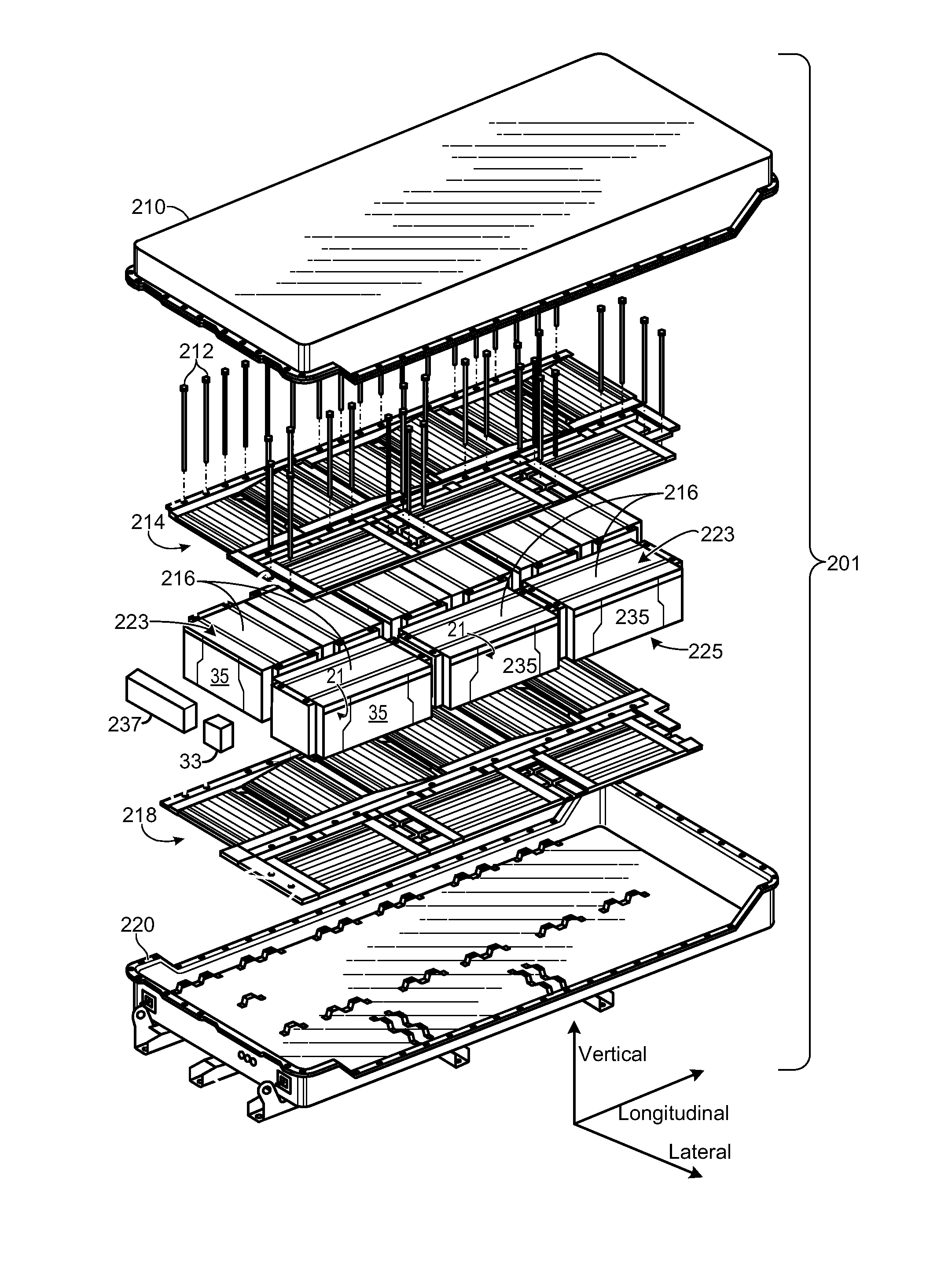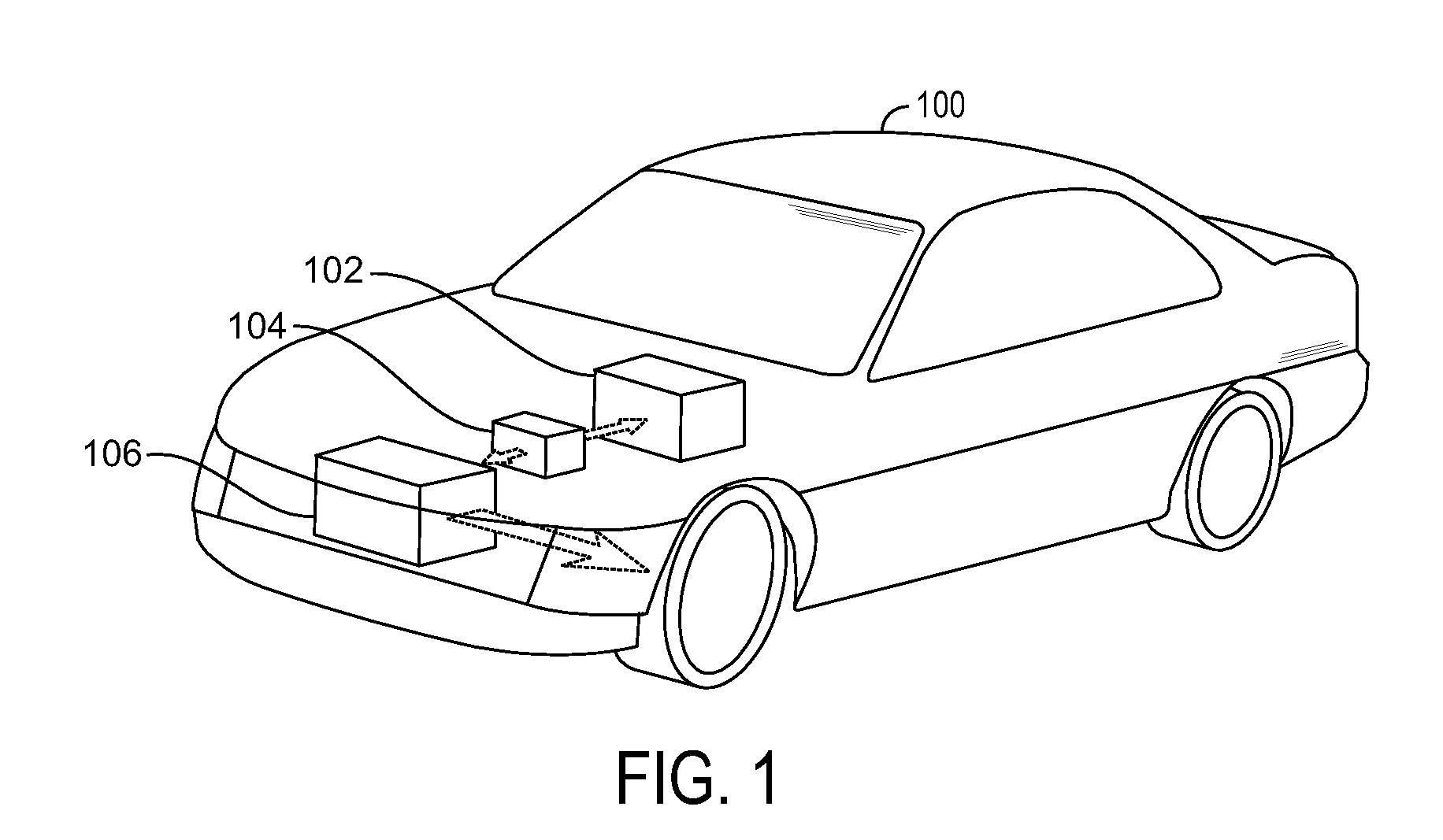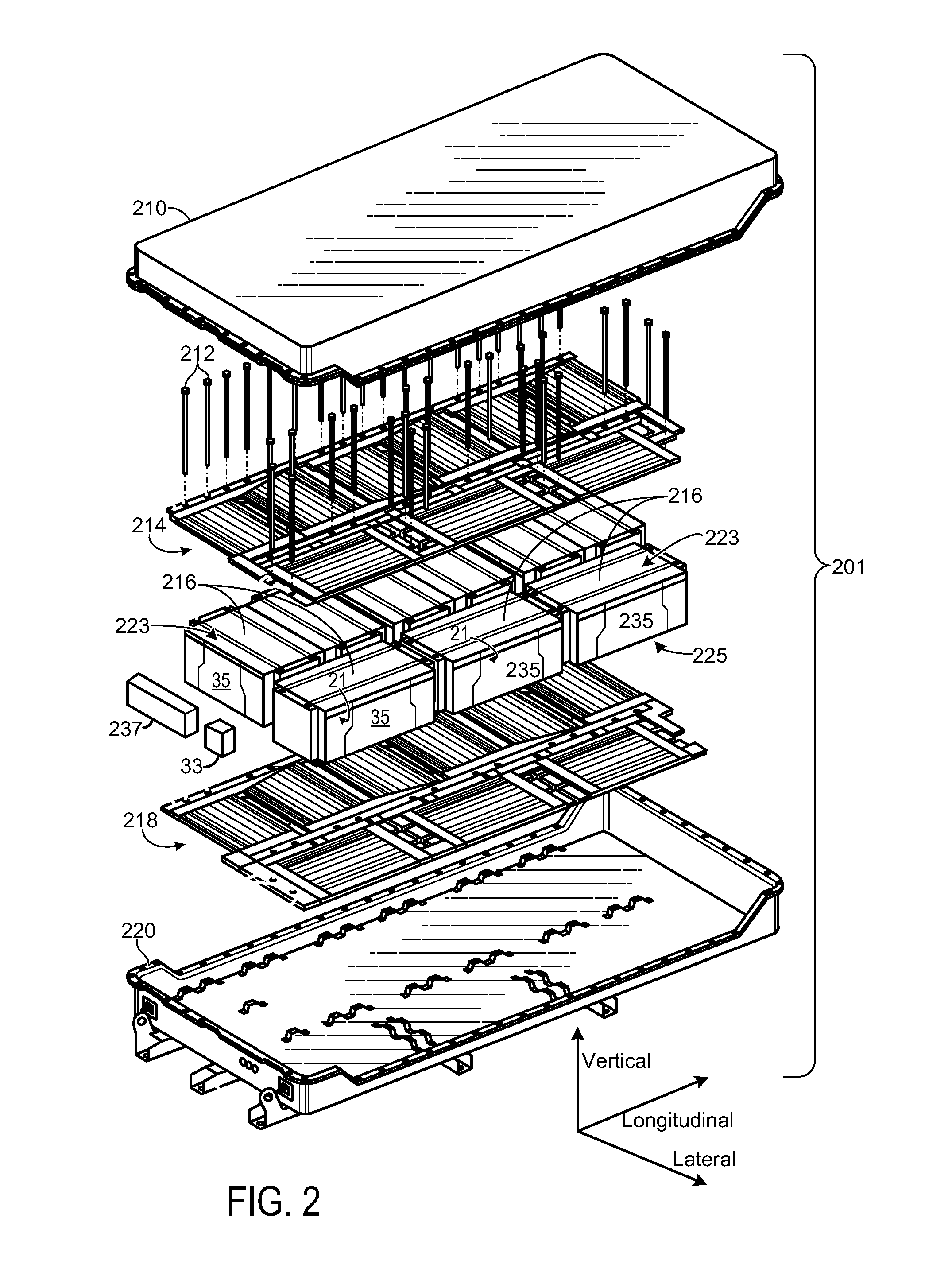Rechargeable Battery Management
a rechargeable battery and management technology, applied in battery/fuel cell control arrangement, safety/protection circuit, electric devices, etc., can solve the problems of battery deformation, degradation on a per-cell voltage level, and overdischarge of rechargeable batteries, so as to reduce electronic hardware requirements, reduce the use of analogue to digital converter hardware, and sample faster
- Summary
- Abstract
- Description
- Claims
- Application Information
AI Technical Summary
Benefits of technology
Problems solved by technology
Method used
Image
Examples
Embodiment Construction
[0023]Rechargeable batteries may be used to store and supply electricity in various applications. For example, such batteries may be used to at least partially propel a vehicle via delivering power to wheels via a motor, such as in the example vehicle shown in FIG. 1.
[0024]In such applications, batteries may be included in a battery pack configuration, as shown in FIG. 2. Such battery packs may include a plurality of battery modules, as shown in FIG. 3. Each battery module in a battery pack may in turn include a plurality of battery cells. The battery cells in a battery module may be arranged in a stacked configuration, such as shown in FIG. 4.
[0025]In order to reduce battery degradation due to overcharging or overdischarging, various battery management systems may be included in a battery pack. Such battery management systems may monitor various components within a battery pack. For example, a battery management system, such as shown schematically in FIG. 5, may be configured to sa...
PUM
 Login to View More
Login to View More Abstract
Description
Claims
Application Information
 Login to View More
Login to View More - R&D
- Intellectual Property
- Life Sciences
- Materials
- Tech Scout
- Unparalleled Data Quality
- Higher Quality Content
- 60% Fewer Hallucinations
Browse by: Latest US Patents, China's latest patents, Technical Efficacy Thesaurus, Application Domain, Technology Topic, Popular Technical Reports.
© 2025 PatSnap. All rights reserved.Legal|Privacy policy|Modern Slavery Act Transparency Statement|Sitemap|About US| Contact US: help@patsnap.com



